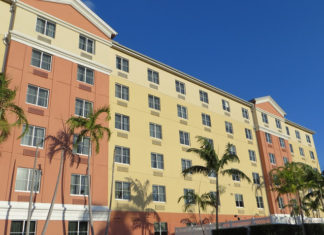If you’ve ever been on a cruise ship, you know that cameras are just about everywhere. From cabin hallways to pool decks to main promenades, it’s hard to go anywhere without noticing that you’re on video.

Thanks to a new legislation passed by Congress, the number of cameras on your next cruise looks like it could increase.
On Friday, the U.S. Senate passed a major defense bill. Known as the National Defense Authorization Act, the bill — numbering thousands and thousands of pages — primarily covers spending for the military. But like many legislative items, there are also other bits and pieces of legislation included. One of those items covers surveillance on passenger ships.
According to the bill, cameras need to be placed in “passenger and crew common areas where there is no reasonable expectation of privacy.” To be sure, most cruise ships already have a large number of cameras. But if there are any blind spots in what’s recorded, then this legislation should remove them.
Ships will have to create a plan and work with an independent third party to “evaluate the placement of video surveillance equipment to deter, prevent, and record a sexual assault aboard the vessel considering factors such as: ship layout and design, itinerary, crew complement, number of passengers, passenger demographics, and historical data on the type and location of prior sexual assault incident allegations.”
While the overall number of crimes reported is low given the millions that sail annually, sexual assaults are by far the most common reported incident. Cruise ships operating in the United States report quarterly crime stats for major incidents to the government.
In 2019, there were over 100 sexual assaults reported on cruise ships operating in the United States, across both passengers and crew. There are also other crimes that come up where more surveillance could help, including thefts and assaults.
Of course, the bill lays out that only places where there is “no reasonable expectation of privacy” are covered by the legislation. So don’t expect that there will be a camera in your stateroom or looking into your balcony space. But if you are in a public place on the ship, then cameras are set to be watching, if they weren’t already.
In addition, the legislation calls for clear signs on the ship that inform people there is camera equipment, and that all video surveillance be retained for at least 20 days.
Vessels covered under the legislation have considerable time to put the new requirements into place. This includes up to 18 months for guidance from the government about how to assess where to place cameras, a year to conduct a ship assessment, 180 days for a plan to install any required cameras, and then at least two years after the approval of a plan to implement it. In other words, it won’t happen overnight.
One thing to note: While this legislation has passed through Congress, it has yet to be signed into law by President Trump. He has reportedly said he will veto the bill as it doesn’t include changing of protections for social media companies.
The bill was passed in the Senate 84-13 and 355-78 in the House of Representatives. Both numbers suggest enough votes to override any Presidential veto and put the legislation into law.










